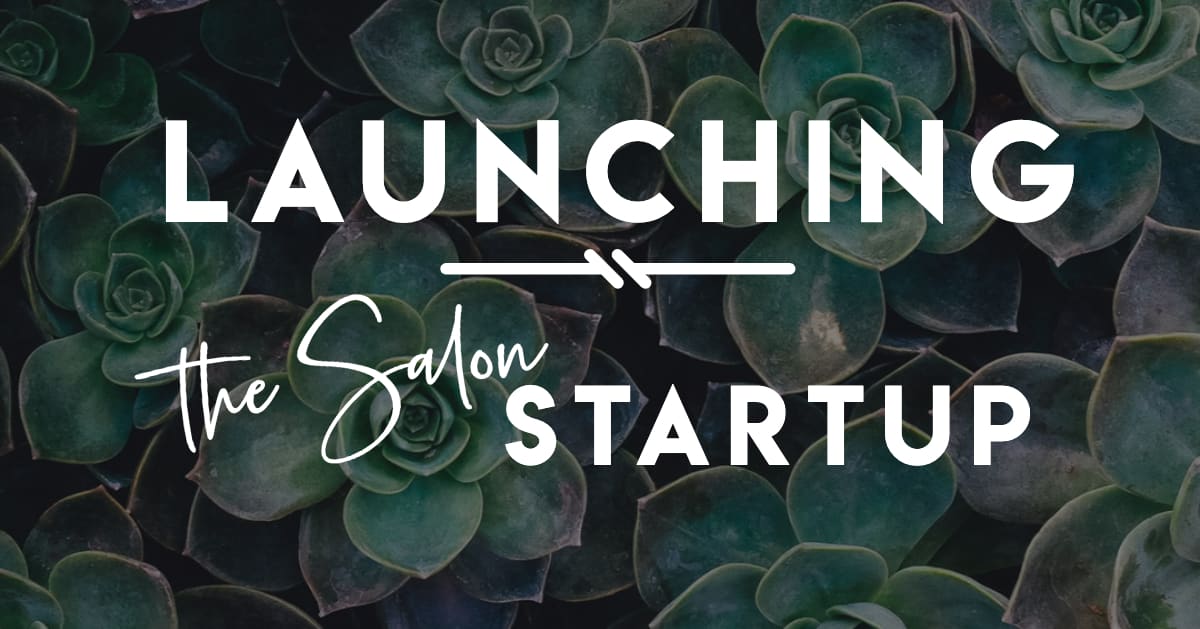My partner (in many things) Jo Hyun is launching a new business, called "The Salon Startup". I wanted to analyse her startup process to show what it takes to open a new business online.
If you're super keen to find out what the business is, Jo is going to teach independent salon owners (who are already skilled in some aspect of cosmetology) the basics of establishing, building, and growing a business. In other words, if you're a pro at eyelash extensions, nails, or hair, then she'll help you be a pro at getting customers, keeping them, and growing your business in line with your goals. You can sign up at her webpage.
Update: We made the difficult decision to not continue with the business model of online training. It was a good decision, just one that was difficult because we already invested days into this business.
Deciding on a "Type" of Business with Constraints
The first thing we thought was: What kind of business do we want to create?
There are many kinds of businesses you can create, and something often forgotten is what constraints we have in our lives.
In other words, what kind of life do we want to live? How does that affect the kind of business we can create?
In summary, we wanted to create a business that:
- Is location independent
- Has very little start-up cost (though it may take a few months to set up)
- Can hit $2-10K/month revenue within six months
Why? (We'll get to the "how" later.)
In our case, we're travelling nearly full time. While we may stop in a country in a year or two — or split our time between two — we don't have geographic stability right now. This means any business we create has to be location independent.
Secondly, we have other businesses we're concurrently running. We blog at Discover Discomfort, and I continue to write at Hooshmand.net (hello!). We might launch more businesses later and don't want this one to be the only thing we're doing.
Revenue goals: Another constraint is the kind of revenue target we want to hit for the product to be worthwhile, and our time-frame to hit that target. Most small businesses would be happy producing a profit of $2-10K. We've set our sights on the higher of that figure, hoping to at least hit a fraction of it at launch date.
Timeframe: A third constraint is how long we have to reach the targets. Some businesses take months or years after launch to create any revenue at all.
Expenses: The final constraint is capital expenditure. It's tempting to spend almost nothing on a business (finding free resources), but our budget is not zero. We can afford to spend at least a few thousand on hosting, designers, and marketing. Especially given our timeframe constraints, we can't wait to sit around for the business to become profitable.
Coming up with ideas
There are lots of ways to come up with business ideas, but for us, it was literally a case of writing down anything that came to our head, staring at it, and discarding anything that didn't seem right.

We just wrote down anything we felt like doing
- Training on opening a cafe
- Software to manage gyms
- An app to find coffee shops (revitalising Pilgrim Coffee)
And anything else. It felt great to write it all down. And once we got it all out of our system, we started paring it down by thinking about whether it met the criteria above.
Choosing a business as an intersection of skills and needs
There are all kinds of bits of advice on how to start a business.
You can start with something you know well and already do. For example, old colleagues of mine left Bain & Company to start a rival model of consulting firm for freelance workers, Expert360.
You can also start doing something you know absolutely nothing about. Pat Flynn was interested in food trucks, so started speaking to food truck owners. Prior to that he knew nothing about it. He had never even owned a food truck. Based on that he wrote a book on how to launch and run a food truck business.
Jo started with something in the middle — an industry she knew as a customer, but never as a service provider. She likes to get her hair and eyelashes done and remarked that eyelashes seemed to be this incredibly lucrative business that was actually easy to learn how to do, and in many places required little licensing. So why weren't there more eyelash technicians around?
It would have been OK to start with that, but Jo went one level further — she decided to become an eyelash technician herself. She paid the course fees, bought the equipment, and started getting clients.

This gave her a window into the many problems that lash technicians in particular have.
- How do you make ads? Then how do you measure their effectiveness?
- How do you do your social media?
- Should you have a website?
- What's the best booking system?
- How many clients do you need to have for a sustainable business?
- Should you keep marketing once you have enough clients?
- Where do people buy their equipment and supplies?
All of these were things Jo could focus on — but then she had to decide what to focus on.
Finding a market
People often bandy about the term "pain points". But these are an incomplete picture. We often grumble about things, but actually don't want to do anything about them.
Why? Because they're not burning desires.
For example, my shower leaked slightly. I hated it. But it took me ages to get around to replacing the washer because I could live with it. Meanwhile, I had other things I wanted to do more, like work on my motorcycle or get to the gym every day.
On the other hand, when I didn't have a job at one point, I really needed a job. It became my #1 focus every day — fixing my LinkedIn profile, setting up calls with people, and applying for jobs online. I spent all my time on it.
Fixing the shower wasn't a burning need. Getting a job definitely was.
The same thing applies to the industry of people running independent salons.
- Yes, they need a better way of managing clients than their pocketbook or Apple Notes. But that'll do for now.
- Yes, their website isn't very good. But who uses websites? People just call them on the phone.
And so on.
To answer that question, apart from just running her own business, Jo used that as a gateway to join Facebook Groups for independent salon owners. There she looked for questions people repeatedly asked. And many of these were about building a business — where to put ads, how much to charge, and so on.
In other words, people were sitting around bored with no customers thinking: how can I get more appointments?
A second tactic is something that's done quite well in the blogging industry and that's to figure out what people are googling. This gives you great insight into what people who are online-savvy still don't know.
We use a simple tool called Keysearch. It lets us check for search volume and competitiveness.
Say for example you're interested in creating a website about opening a gym. Well, you're in luck, it's an excellent idea (and something we're working on).

Addressing the market — Going to where they are
It's important to know where your customers live.
No, not literally. I just mean online — do they live on
- Facebook groups?
- Search engines?
- Forums?
- Chat apps?
Wherever they are, that's where you have to go to build trust and connections.
In the past, I've seen people struggle with knowing, for example, that their target market was entirely on LinkedIn, but then not knowing how to sell through that platform. (It's hard. People on LinkedIn are usually looking for a job, so anything that's not helping them with that is just a distraction.)
Or similarly, if you try to sell things through Facebook ads but your audience isn't on Facebook... or you have no idea what they do on Facebook... you'll face an uphill battle.
For this industry, they're on Facebook. So we have to work out how to do those ads effectively.
Identifying the target customer
The next step is to think: who is the person who I am trying to sell to?
- What do they want help with?
- What are their dreams?
- How can I get them to trust me that I'm just not another shark? (Although, admittedly, we're all a bit sharkish... and they're sharkish, too!)
People like to think that we're in a movement towards openness and transparency, though the truth is you can see these trends even if you look in ads from a hundred years ago.
Building an audience — Email is still king!
Before launching a final product, Jo decided she wanted to build an audience. And the best way to do that (still! Even in 2020!) is to build an email list.
Why email? Because it's predictable and nobody will take it away from you.
- You own the list. Unlike Facebook, you don't have to pay just to contact your list. (Facebook makes you pay just to expose your posts — even to members of your own group!)
- You can send whatever you like to the list. Facebook and Instagram have strict rules about what you can publish to the list.
- You can get great analytics. Depending on your platform, you can check send-rates, bounce rates, click-through rates, conversion rates... and it's all very, very easy.
Email is still king.
The formula for building an email list is still the same.
- Landing page.
- Give something away for joining.
- Create ads sending traffic to the page.
Then, measure your cost per click, and cost per conversion. Try to get those as low as possible by iterating with ad photos, copy, and audience.
And good luck!
That's it for now. More on the product sales in a later phase.

